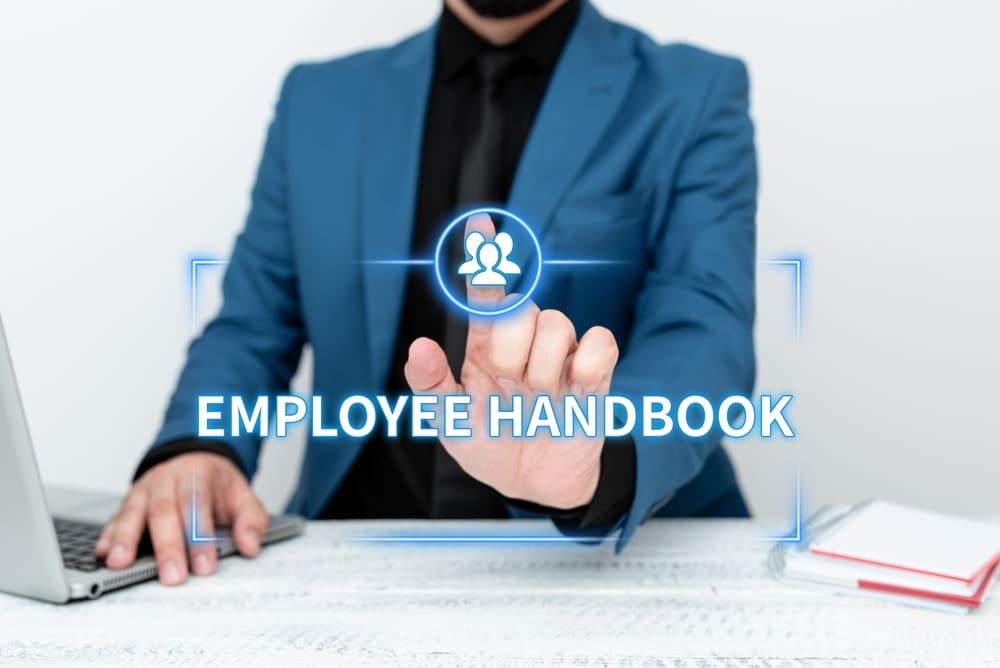
Environmental Social Governance
Back to Blog

September 6, 2022
Perhaps one of the more complicated lingering effects of the COVID-19 pandemic for employers has been the explosion in the number of employees working fully or partially remotely. The unprecedented flexibility to work from home has been embraced by many employers (and many more employees). It has also resulted in a mass migration of employees out of crowded cities to states where more room and affordable housing are proving too tempting to pass up.
As a result, more and more employers are finding their workforce dispersed across the country and into states where many have never had employees before. This has made it much more difficult for employers to ensure their employee handbooks and workplace policies comply with the multitude of confusing state laws and regulations. It’s no surprise then that many employers and HR professionals are now taking a harder look at their employee handbooks to ensure they have all the policies required by the states where they now have employees.
Some of the more widely adopted workplace policies include those on equal employment opportunity anti-discrimination, sexual harassment, and health & safety (especially as it relates to COVID-19 and the lingering pandemic). But what happens when employee handbooks and workplace policies are not legally compliant?
An employee handbook that is inaccurate, out of date, or poorly written can potentially expose an employer to liability– including massive fines and even potential lawsuits from their employees. With these very real and potentially damaging repercussions for not maintaining a fully compliant employee handbook, it is crucial that employers take steps to carefully review their handbooks to ensure they contain all the policies required by federal law and all the states and local jurisdictions where they have employees.
Federal, state, and local laws prohibit discrimination in employment in connection with a broad range of classes, including discrimination based on sex, race, color, religion, natural origin, age, disability, and genetic information. Many employers already have an equal employment opportunity (“EEO”) and anti-discrimination policy. By adopting these policies, not only are employers complying with federal, state, and local laws, they are demonstrating their commitment to creating an equitable, non-discriminatory workplace while providing their employees with an effective mechanism to address workplace-related complaints.
Hubbell v. FedEx SmartPost, 933 F.3d 558 (6th Cir. 2019) is an example of what can happen when an employer fails to adopt a compliant anti-discrimination policy. In this case, FedEx was required to pay over $519,500 in damages for failing to show that it had made a “good faith effort to comply with the law prohibiting gender discrimination”.
The substantial jury award in the Hubbell v. FedEx SmartPost case is a good example of what can happen when employers fail to adopt and include required policies such as EEO and anti-discrimination policies in their employee handbooks. Because discrimination and harassment based on sex, race, color, religion, natural origin, age, disability, and genetic information are prohibited under federal and state laws, it is important to make sure your EEO and anti-discrimination policies are fully compliant to prevent job discrimination and inequitable hiring practices that could result in significant liability for the employer.
Title VII of the Civil Rights Act of 1964 (“Title VII”) and the Age Discrimination in Employment Act (“ADEA”) both prohibit discrimination based on sex, race, religion, color, national origin, and age. Companies with at least 15 employers are subject to Title VII, and companies with 20 or more employees are subject to the ADEA. Many states require employers to have a workplace harassment policy, and many others also require that employers provide anti-harassment training to staff and supervisors. In such situations, noncompliance in those states can result in hefty sanctions, fines, and the potential for legal liability.
Most consequences occur when an employer fails to adopt and distribute a compliant workplace harassment policy. However, there are also intangible consequences that can be equally as damaging.
Not having a compliant, thoughtful workplace policy prohibiting harassment can foster a toxic work environment that can damage the morale, productivity, and safety of all employees. In some situations where an employer has not adopted a compliant anti-harassment policy, employees may decide to address their grievances with outside enforcement agencies such as the EEOC. For example, in November 2009, the California Department of Fair Employment and Housing found an employer liable for unlawful sexual harassment for failing to adopt and distribute a workplace harassment policy.
Employers can help avoid liability for unlawful sexual harassment by incorporating compliant sexual harassment and workplace violence policies into their employee handbook. Handbooks should evolve and change as frequently as policy does. For instance,in March 2022, President Biden signed into law the Ending Forced Arbitration of Sexual Assault and Sexual Harassment Act of 2021 (“Act”). To maintain compliance, employers should update their employee handbooks to reflect the new law’s policy stating that sexual harassment and assault claims are no longer subject to mandatory arbitration. It is also important to make sure the policy is legally compliant and includes all the required provisions. Examples of what should be included in the policy include:
The continuing effects of the COVID-19 pandemic have left many employers in unfamiliar territory. Before COVID, most companies did not have a pandemic-specific policy in their employee handbook. Since COVID-19 has moved toward an endemic stage (rather than pandemic) it is important that employers replace any pandemic-focused return-to-work policies with ones that are broader.
Language that should be incorporated includes encouraging employees to remain home when they are infected with an illness and to return home if they become ill after arriving at the workplace. Measures like this will help ensure that your company is ready to respond to an outbreak of any contagious illness in the future, not just COVID-19.
The policies mentioned above are only a few of the policies that most states require. Some states may require more than 15 policies – do you know what they are? Does your handbook include them? Are they up to date?
With so many regulations and constant changes to state and federal laws, it can be difficult to navigate and understand exactly what policies your employee handbook should include. Our Compliance Advisory Team has years of employment law experience and is available to consult with you to make sure your HR and handbook policies are up-to-date with this new law and all other required workplace policies in all the states where you have employees.
Traliant’s Employee Handbook Service takes the guesswork out of managing constant and confusing updates to laws and regulations to ensure your handbook stays current and compliant. Learn more about our HR Policies and Employee Handbook Service and schedule a complimentary consultation with a member of our Compliance Advisory Team.
Share
By
Elissa Rossi